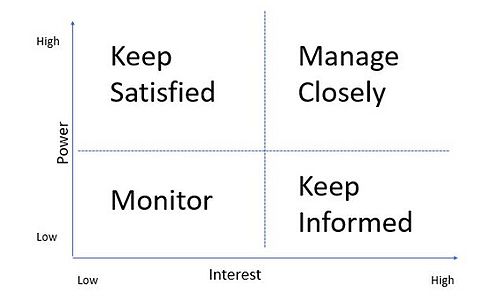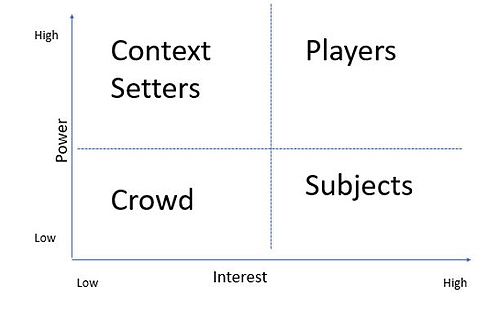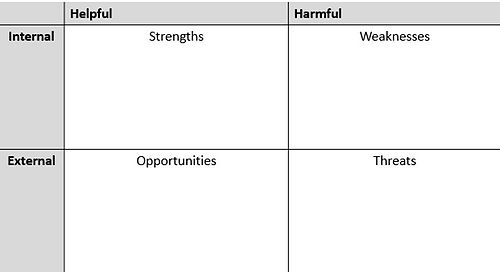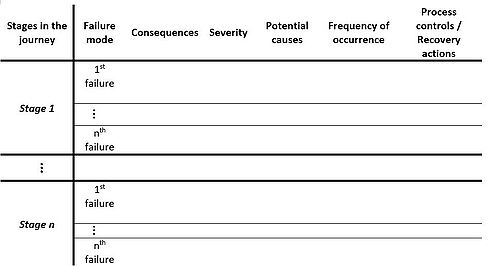Metro Opening
Contents |
SMART Method - How to formulate goals correctly
SMART can be used both individually and in a company.
In order to set goals in a meaningful way, the method of smart goal setting has become established. The acronym SMART stands for
S - Specific The objectives should be clearly and positively described.
M - Measurable The achievement of objectives should be measurable.
A - Attractive For you personally it should be attractive (motive-congruent) to reach the goal.
R - Realistic The objective should be realistically achievable.
T - Timely The objective should be clearly defined in terms of deadlines.
A SMART formulation of the goal “I want to exercise more often” could look like this:
"I am going for a run two times a week every Monday and Thursday between 6 and 7 pm for the next three months till May the 20th, to feel more comfortable in my body".
PESTEL
A PESTEL analysis. is used to identify and analyze external factors that can impact the organisation. The results of PESTEL are often used to find the threats and weaknesses in a SWOT analysis
PESTEL consists of six elements: Political, Economic, Social, Technological, Environmental, and Legal.
Political: This element is mainly about how much the government intervenes in the economy. This can have a huge impact on your company since one needs to respond to new legislation and adjust your marketing policies.
Economic: Economics have a significant impact on your business too. The economic factors include but are not limited to: economic growth, inflations, and disposable income of customers.
Social: The social factors include population growth, age distribution, and other demographic factors.
Technological: Technology is changing quickly and companies need to consider that. Technological factors can affect the company by offering new ways of producing and distributing goods and services as well as new ways of communicating with the market.
Environmental factors: The environmental impacts have gotten more attention in the last fifteen years. Companies should consider how they affect the environment and how to be sustainable.
Legal factors: Legal factors can be health and safety, equal opportunities, consumer rights etc. This element can be difficult to manage if your company is multinational.
Scope - WHY, HOW, WHAT?
The WHY, HOW, WHAT? is also referred to as “The Golden Circle” is a methodology and tool applicable for structuring the scope of a project, product, or service.
All organizations know WHAT they do, many know HOW they do it but in order to be truly successful, they need to know WHY they are doing it. The WHY, HOW WHAT? suggests that in order to have a clear and concrete scope the organization will have to start with the WHY and from there on work outwards.
WHY the project is undertaken in the first place defines the actual goal. Without a clear and tangible goal, it is hard to make a strategy to obtain the goal as well as to recognize whether or not the desired outcome has been fulfilled.
Asking HOW relates to the actual planning needed to obtain the desired outcome.
Finally, when the issues of defining a concrete and realistic desired outcome or benefit as well as planning how to get there has been resolved, it is now possible to formulate the concrete product, service, or knowledge necessary to achieve this through the WHAT.
Stakeholder analysis
A stakeholder analysis is a process that helps an organization to identify stakeholders before a project begins. stakeholders are individuals or groups that can impact the success and the execution of a project or are impacted by a project. In a stakeholder analysis, these stakeholders are grouped according to their level of interest and influence in the project, by doing this it can be determined how to best involve and how to communicate with the different stakeholders.
There are mainly three reasons to perform a stakeholder analysis:
- It helps to identify and enlist key organizational players.
- To gain alignment as early as possible among the stakeholders’ goals and plans.
- To address conflicts or issues as early in the project as possible.
When performing a stakeholder analysis you work out a power/interest Grid:
The grid above shows how to handle different stakeholders, but to identify them you can make a new grid that looks like this:
SWOT analysis
SWOT is an analysis that can be used as a planning framework to identify projects' strategic strengths, weaknesses, opportunities, and threats. The term SWOT is an acronym of these four factors. In a SWOT analysis, a project’s strengths and weaknesses are internal, whereas opportunities and threats are external. In general SWOT analysis is performed in the early stages of a project.
To perform a SWOT there are the following steps:
- Identify the objective of the project.
- Assemble a team.
- Most people who are involved in the project and are affected by it.
- Build a SWOT matrix like the one below.
- Fill in the grid.
- Talk it out and draw conclusions.
A SWOT analysis is a valuable planning framework that any team within an organization can use to quickly get a sense of the feasibility of moving forward with a new project. Furthermore, the SWOT matrix is easy to build and to fill out the matrix your team has to brainstorm.
PRINCE2
PRINCE2 is an advanced step-by-step (input/output, planning, organizing) method in project management. The tool has a process-based approach which makes it applicable to all types of projects. The process-based approach allows the project manager to identify key activities and their connection with predecessors/inputs and future activities/outputs. The idea of PRINCE2 is to emphasize dividing the project into more manageable and controllable phases to achieve a more structured and aligned project.
PRINCE2 emphasize that the project is quality controlled in 4 phases to ensure the progress and quality of the project:
- Initiation (assuring a great start to the project)
- Stage boundaries (chosen stages will be evaluated to ensure the progress)
- Ad hoc direction (monitoring progress, providing advice and guidance, reacting to exception situations)
- Project closure (assuring the project is delivering scope).
PRINCE2 also utilize a technique known as ‘Product-based planning’ which requires four activities:
- Write the Project Product Description (identify the scope of the project)
- Create the product breakdown structure (create the arrangement of activities)
- Write the product descriptions (detail the activities)
- Create the product flow diagram (Gantt-chart for visibility during the project)
FMEA – Failure Mode Effect Analysis
For every organization or project, risk management is a crucial tool to handle, combat, and reduce risks. FMEA is a tool in risk management that can help a project manager to systematically identify potential failures and help make a contingency plan for minimizing and even avoiding the risk associated with the project. FMAA is for example used when:
- A service is being designed or redesigned
- Improvement goals are planned for an existing process, product, or service
- Analyzing failures of an existing process, product, or service
The FMEA was developed in the 1950s but is continuously evolving, and is getting refined. It is important that the tool is fitted for the needs of the organization or the event that it is used on.
FMEA is essentially a brainstorming exercise where the team in a systematic fashion identify:
- Failure mode. The possible failures or risks at a stage.
- Consequences of the failure.
- The severity of the impacts of the failure. This is a scale from 1 to 10.
- Potential courses for why and how the failure happened.
- Frequency of occurrence. This is a scale from 1 to 10.
- Process controls / Recovery actions. How to recover from the failure.
This is done in a matrix form like the one illustrated below:
To expand the FMEA, one could include:
- Detection rate that estimates how well the failure can be detected before the customer notices. This is a scale from 1 to 10.
- The risk priority number is ranking the potential failures in the order they should be addressed. This is calculated by multiplying the severity of the occurrence.
Sources
https://www.professionalacademy.com/blogs-and-advice/marketing-theories---pestel-analysis
https://www.prince2.com/uk/prince2-processes
https://www.productplan.com/glossary/stakeholder-analysis/
https://www.productplan.com/glossary/swot-analysis/
https://cfiaarhus.dk/whyhowwhat
https://asq.org/quality-resources/fmea
http://www.innovation-portal.info/toolkits/fmea-failure-mode-effect-analysis/




